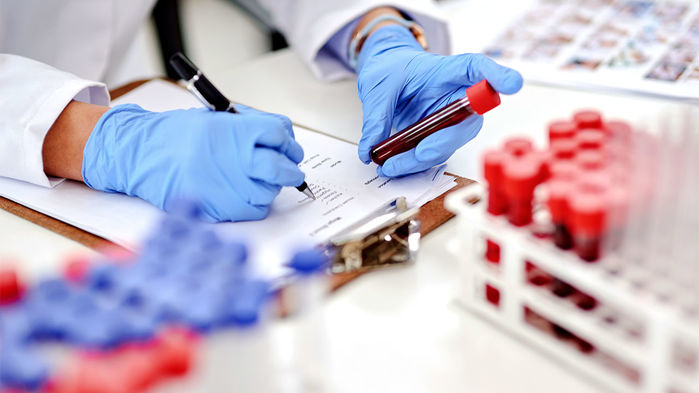Why Fresh-Frozen Primary Tissue is Critically Important in the Fight Against Melanoma


AIM at Melanoma will very soon announce the grand opening of the first branch of the International Tissue Bank Consortium (IMTBC). A fresh-frozen primary tissue bank—fully annotated and collaborative—has never been achieved before in melanoma, and it has taken more than a decade of dedicated work to accomplish. More on that in a grand opening press release, coming soon!
This article seeks to help melanoma patients, survivors, caregivers, and family members understand why fresh-frozen primary tissue is so critically important in the fight against melanoma. AIM at Melanoma asked Professor Reinhard Dummer to help us explain.

Reinhard Dummer Dept. Of Dermatology University Hospital Zürich, Switzerland
Reinhard Dummer is Professor of the University of Zurich and Vice-Chairman of the Department of Dermatology in the University Hospital of Zürich, Switzerland. He is a key thought leader in worldwide cutaneous oncology. Currently, he heads the Skin Cancer Unit and the Clinical Trial Unit of the Department of Dermatology.
He is Board Certified in allergology, clinical immunology, dermatology and dermatopathology.
Professor Dummer’s principal research interests are molecular biology, immunology, and immunotherapy of cutaneous malignancies, including cutaneous lymphomas and melanomas. He has published more than 677 papers. He is past-president of the Melanoma Project Group of the Swiss Institute for Applied Cancer Research, 1999 -2016, is a member of German National Academy of Sciences (Leopoldina), is a past board member of the Society for Melanoma Research, and is past President of the International Society for Cutaneous Lymphomas.
He is a founding and board member of the European Association of Dermato-Oncology (EADO), ESMO, EATI, URPP and past President of the European Society for Dermatological Research (ESDR). He is also a member of AIM at Melanoma’s International Melanoma Working Group (IMWG).
Q & A with Professor Reinhard Dummer
Why is fresh-frozen primary tissue important vs. formalin fixed, paraffin embedded tissue? What can you do with fresh-frozen that you can’t with formalin fixed, paraffin embedded tissue?
For biobanking, you want to do many different types of tests and understand the tumor as best you can.
Formalin-fixed is the “usual” way of storing primary tumors. In this method, a lot of water is depleted from the tissue, which degrades the proteins. The messenger RNA is also degraded into smaller pieces during the fixing process and researchers want the messenger RNA intact.
For frozen tissue, there are by far more monoclonal antibodies.
A tumor cell has already initiated an immune response, and you’ll be able to recognize that in a freshly frozen piece but not in a formalin fixed piece. On formalin-fixed tissue, it is very difficult to do several stainings at the same time, which researchers want to do.
Why is primary tumor tissue more important than metastatic tissue?
The highest degree of mutations is in the primary. We used to think that we could get all the information we would need from the metastasized tumors, but the mets are a product of the organ in which they are growing, and they will reflect that organ. Disease has different migration pathways. Only part of the tumor cells goes to the lymph nodes, and other cells go into the bloodstream, so you don’t get a full picture of the person’s disease from just the metastases.
By contrast, the information is fixed in the primary tumor. The heterogeneity of the disease can only be read in the primary tumor—it’s the best place to understand the heterogeneity of the disease. There is a tremendous amount of information in the primary tumor that can help us predict the future for the patient if we can learn to read it. The primary tumor has ALL the information about the disease.
The highest degree of genetic alterations is found in the primary tumor. During the course of the disease, the tumor loses large DNA fragments. For research, you want to look at the tumor at several “time points,” if possible, starting most importantly with the primary tumor.
If we are going to find predictive or prognostic markers, it will be in the primary tumor.
We believe we can answer questions such as whether a patient should undergo sentinel lymph node biopsy. We hope primary tumor studies can tell us. The primary tumor will have the information on whether immunotherapy will work in a certain patient; whether targeted therapy will work in a certain patient; or whether the patient will not benefit from treatment at all.
This is precision medicine: Knowing which drug will work on which patient and avoiding unnecessary exposure to drugs and surgeries.
Is it true the RNA “dies” in ~45 minutes? Why is intact RNA important for research?
Yes, enzymes will begin to cut RNA into smaller pieces as tissue sits at room temperature. The combination of time and temperature determines the speed with which the RNA will degrade.
A lot of information on DNA is understood, and DNA can be important or not in tumor research. But what is important is knowing which part of the DNA is really used by the cell. What’s relevant is what RNA is present. RNA is a mirror; only a small part of DNA is mirrored in RNA and that’s what researchers want to see.
Many researchers say, “tissue is the issue.” Why is it in such demand?
Primary tissue is hard to get. To obtain good tissue samples, you must convince many people to be a part of a process that may not be of interest to them. Multiple surgeons and dermatologists must be convinced to remove the tumor a certain way; to work with the team that is freezing it and the team that is depending on it for research. As well, up to 90% of the primary tissue removed will not be large enough to use a portion for banking.
Why is the annotation important, rather than just having the primary tissue?
The medical history and other annotation help us understand the full picture. The outcome of the malignancy of a disease is different from patient to patient. The question is, Why? Each tumor is different; each tumor has its own story in each individual. This information can only be understood if we get the medical history and other annotation on each person. For example, body weight—obesity—in people has been shown to make immunotherapy more effective. These types of details are important. Some observational studies suggest that overweight BMI may have a protective effect during cancer treatment. But you need to know other factors about the patient, such as a history of smoking and the use of aspirin, yet another reason that the annotation is so important.
Why is having the patients’ blood and other biological samples important?
The blood sample is critical for measuring inflammation; parts of the tumor that circulate via DNA in the blood; and the number of immune cells circulating in the blood. Fecal samples are important to understand the microbiome and the fine-tuning of immune responses to understand the outcome of the disease.
Recent Posts

Behavioral Addiction Responsible for Excessive Indoor Tanning

Announcing AIM at Melanoma’s Official Sunscreen Partner, WearSPF

Red Hair Genetics: 5 Things You May Not Know

Surviving & Thriving: From Melanoma Survivor to Sun Safety Advocate


